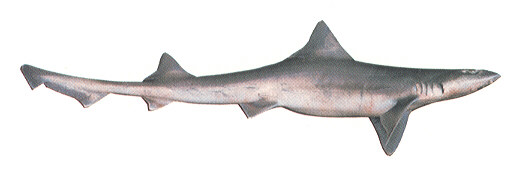Brown Smoothhound

Common Name: Brown Smoothhound
Scientific Name: Mustelus henlei
Description
The body of the brown smoothhound is elongate, slender, tapering from behind the dorsal fin to the long slender tail. The snout is comparatively long and flattened. The color is brown or bronze above and silvery below. The back one-fifth of the dorsal fin is without scales. The teeth are blunt, without sharp points. The brown and other smoothhounds can be distinguished from the shark soupfin since their second dorsal fins originate well in advance of the beginning of the anal fin; while in the soupfin, the second dorsal begins behind the origin of the anal fin.
Range
The brown smoothhound occurs from the Gulf of California to Humboldt Bay, California. It is found at depths from shallow water to 360 feet.
Natural History
The diet of the brown smoothhound includes crabs, shrimp, and small fishes. Females bear their young live, as do most other sharks.
Fishing Information
The brown smoothhound is a relatively small shark, and is one of the most abundant sharks in the central California sport fishery. This is a good sport species on light tackle, and can be taken in bays from San Francisco to Point Conception. Good baits to use include crabs, shrimp and small fishes. The brown smoothhound is considered a very good table fish.
Other Common Names
mud shark, dogfish, paloma, sand shark, Henle's shark.
Largest Recorded
3 feet 1 inch; no weight recorded
Habitat
Shallow Sandy Environment
 Deep Sea Crabs
Deep Sea Crabs